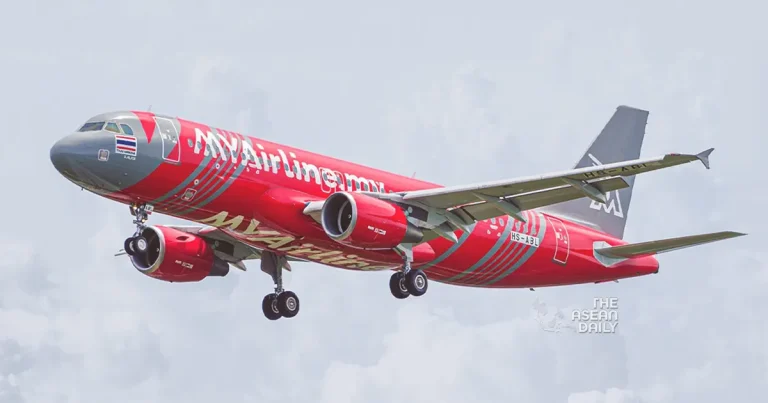17-10-2023 (KUALA LUMPUR) MYAirline, the Malaysian budget carrier launched less than a year ago, abruptly suspended its operations on Thursday, October 12th, a mere 45 minutes prior to the scheduled departure of the first of its 40 flights for that day. The suspension didn’t come as a surprise to industry followers, as the airline had been grappling with financial issues for several months, causing concerns among suppliers and employees.
MYAirline was struggling to meet its financial obligations, including salary payments and airport fees. Over the last few months, it had been desperately seeking new investors, with a final attempt falling through on October 11th when a potential white knight deal collapsed. This raised questions about the effectiveness of the regulatory bodies in Malaysia.
In Malaysia, the Malaysia Aviation Commission (Mavcom) is responsible for overseeing economic matters and ensuring the financial stability of airlines, while the Civil Aviation Authority of Malaysia (CAAM) is tasked with ensuring technical compliance, including safety standards. It is unusual for regulators not to be aware of an airline’s financial troubles, and it raises concerns about their lack of regular engagement with struggling carriers.
The Malaysian government promptly expressed its disappointment, with Transport Minister Anthony Loke criticizing MYAirline for its irresponsibility and asserting that “Mavcom was caught completely off guard.” Regulators should be actively monitoring the financial health of airlines and not rely on them to voluntarily report their problems.
The sudden suspension left hundreds of unsuspecting passengers stranded at Kuala Lumpur International Airport Terminal 2, the hub for almost all of MYAirline’s routes. The government also revealed that it received no prior notification, leaving over 125,000 future passengers in the lurch, with tickets valued at more than RM20 million ($4.2 million) now going unfulfilled.
Since its inception on December 1, 2022, MYAirline had carried nearly 2 million passengers on nine domestic and two international routes, securing approximately a 10% share of Malaysia’s domestic market, which serves around 2 million passengers each month. With nine second-hand aircraft and commitments for several more, the airline had ambitious plans, including ordering at least 100 new aircraft and launching an initial public offering.
The airline’s failure after just 10 months and its lofty ambitions highlight significant flaws in its business plans. Mavcom had initially granted MYAirline an air service license in November 2022, concluding that it possessed sufficient capital, stable shareholders, and a viable business strategy. However, many industry observers believed the airline’s business plan was unrealistic from the start.
One major flaw in the plan was the mistaken assumption that AirAsia was vulnerable following the pandemic, leaving room for competition. AirAsia, with over 50% of Malaysia’s domestic market share, may not have been as financially robust as before, but it effectively fought back. To counter MYAirline’s entry, AirAsia drastically reduced fares and capacity, a strategy it had employed against competitors prior to the pandemic.
Although MYAirline’s flights boasted load factors of nearly 100%, its ticket prices were too low to cover operational costs, resulting in its initial capital running dry after just six months. In a bid to salvage its operations, MYAirline attempted to shift its focus to international markets, cutting two domestic routes and planning to launch several new international routes. However, this pivot required substantial investments, and the airline couldn’t secure slots at some of the targeted international airports, including Singapore.
Even if MYAirline had managed to secure the required capital for a new business plan, it would have faced intense competition in the Malaysian and regional aviation industry. With established players like the AirAsia Group, Malaysia Airlines Group, and Batik Air Malaysia (formerly known as Malindo Air), Malaysia’s market could not accommodate more than three major competitors.
There seems to be a constant influx of entrepreneurs seeking to establish airlines, often underestimating the financial challenges and the difficulty of achieving profitability.
Having more airlines is advantageous for consumers and politically expedient, as lower fares are accessible to constituents. However, ensuring a sustainable airline industry is vital for the long-term. Malaysia should reevaluate its policies for start-up airlines to guarantee that they are financially sound and have a reasonable chance of survival. Licensing requirements should be scrutinized to ensure airlines have sufficient capital to operate.
At the very least, airlines should be obliged to submit quarterly financial reports and hold regular meetings with regulatory authorities. Allowing an airline to continue operations after essentially depleting its capital, relying on future bookings to meet current financial obligations, should not be acceptable.
These recommendations are not only pertinent to Malaysia but also to other Southeast Asian countries that have experienced similar airline failures over the years. In 2016, another Malaysian start-up airline, Rayani Air, ceased operations after only five months, albeit with less impact as it operated only two aircraft. Approving airlines that are likely to fail not only endangers passengers but could also harm the tourism sector.
While regulators should exercise greater vigilance, the lessons from the MYAirline collapse are in danger of being swiftly forgotten, as the allure of starting new airlines continues to attract ambitious entrepreneurs.




